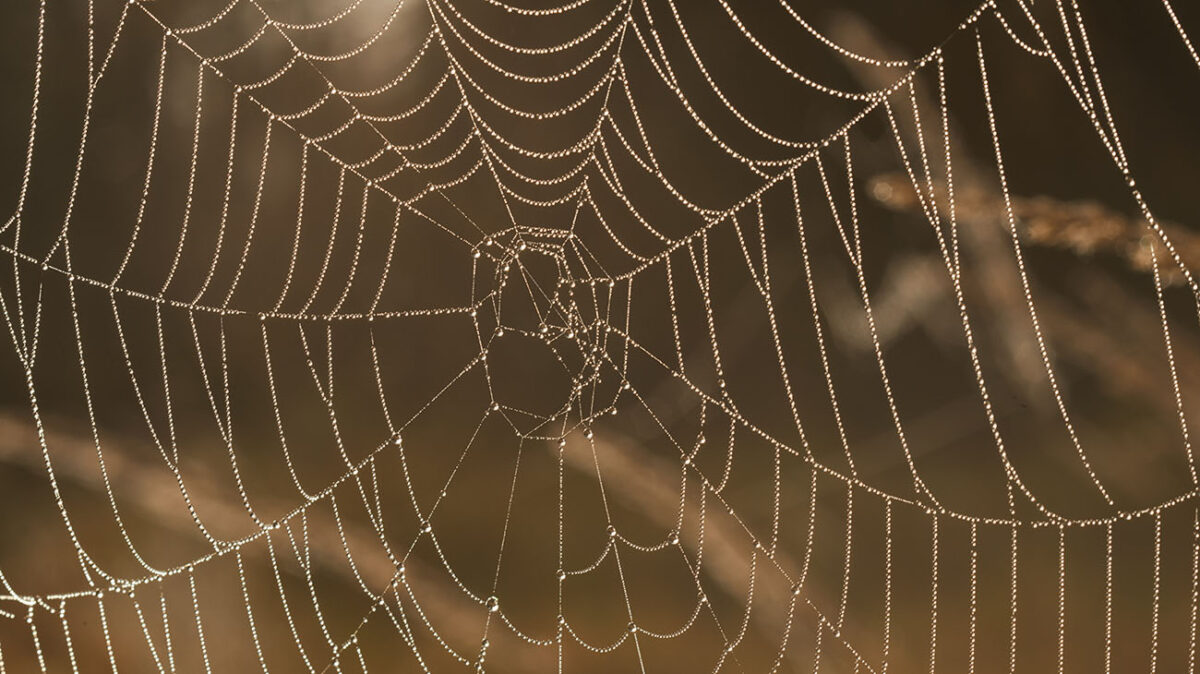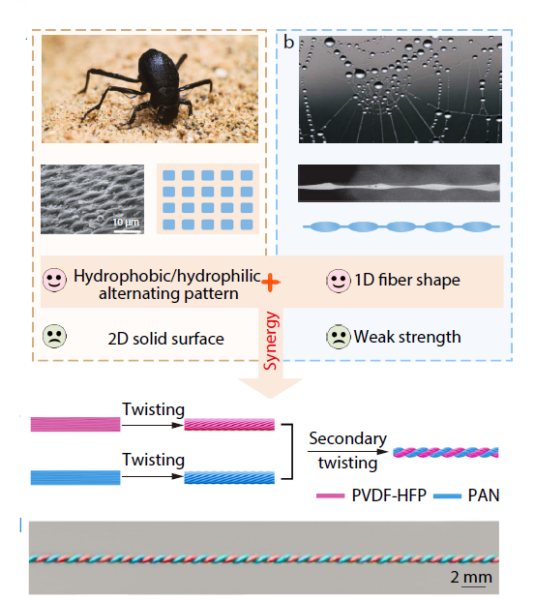Bioinspired Yarn Enhances Fog Collection for Water Harvesting

Researchers have now developed a bioinspired double-stranded yarn to harvest water from atmospheric fog efficiently.
The global water crisis is becoming more severe, particularly in arid regions with limited traditional water sources. Researchers have now developed a bioinspired double-stranded yarn to harvest water from atmospheric fog efficiently. This innovative solution holds great promise for addressing water scarcity in these areas.
You can also read: Upcycling Microplastics into Graphene
Inspiration from Nature’s Water Collectors
Inspired by nature, the researchers examined the water-collecting abilities of desert beetles and spider silk. The Namib desert beetle’s back features alternating hydrophobic and hydrophilic patterns, enabling efficient fog collection. Similarly, spider silk uses periodic knots to capture and transport water droplets along its length. By combining these two designs, the research team aimed to improve fog collection.
Designing the Bioinspired Yarn
The researchers developed a double-stranded yarn with alternating hydrophobic and hydrophilic nanofibers using electrospinning and twisting techniques. They combined hydrophobic poly(vinylidene fluoride-co-hexafluoropropylene) (PVDF-HFP) fibers and hydrophilic polyacrylonitrile (PAN) fibers to form the yarn. This design allows water droplets to gather on the hydrophobic segments and be transported to the hydrophilic areas.

Illustration of the biological fog collection models and preparation process of the double-strand anisotropic twisted yarn. (a) Namib desert beetle and (b) spider silk in nature with fog collection ability. Courtesy of Bioinspired Double-stranded Yarn with Alternating Hydrophobic/Hydrophilic Patterns for High-efficiency Fog Collection.
Superior Fog Collection Performance
The bioinspired yarn significantly improved fog collection efficiency compared to homogeneous hydrophobic or hydrophilic yarns. Specifically, the yarn achieved a collection rate of 3.20 g/h·cm², showing its effectiveness. The researchers also optimized the yarn’s diameter ratio to balance water deposition and droplet transport.
Real-World Applications and Durability
This yarn offers practical advantages for large-scale water harvesting in difficult environments where traditional methods fall short. Its one-dimensional structure avoids wind obstruction, making it suitable for extensive fog collection operations. Furthermore, its robust mechanical strength allows it to withstand harsh weather conditions while maintaining efficiency.

Fog droplets deposit and aggregate at the hydrophobic PVDF-HFP yarn sites. Later, water droplets will be absorbed toward the hydrophilic PAN yarn region under the hydrophilic force. Courtesy of Courtesy of Bioinspired Double-stranded Yarn with Alternating Hydrophobic/Hydrophilic Patterns for High-efficiency Fog Collection.
A Path Toward Water Security
This bioinspired double-stranded yarn provides a groundbreaking method for fog collection, offering a sustainable solution to water scarcity. By mimicking natural designs from desert beetles and spider silk, researchers have created an efficient material for capturing water from the atmosphere. This innovation could inspire future advancements in fog collection and water resource management, providing hope for water-scarce communities.
